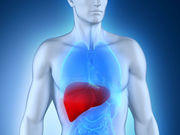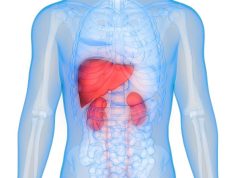In patients with ascites ≥2,000 mL, only alkaline phosphatase linked to umbilical hernia
WEDNESDAY, Sept. 7, 2016 (HealthDay News) — For patients with cirrhosis, volume of ascites is positively associated with umbilical hernia, according to a study published online Aug. 29 in the Journal of Evidence-Based Medicine.
Ran Wang, from the General Hospital of Shenyang Military Area in China, and colleagues examined the correlation between umbilical hernia and volume of ascites. One hundred fifty-seven patients with cirrhosis who underwent axial abdominopelvic computed tomography scans were enrolled.
Of the patients, 101 had ascites and six had umbilical hernia. The researchers found that patients with umbilical hernia had significantly lower alkaline phosphatase (AKP; P = 0.008) and serum sodium (P = 0.011). Patients with umbilical hernia had significantly higher Child-Pugh scores (P = 0.03) and volume of ascites (P < 0.0001). The volume of ascites, Child-Pugh scores, and blood ammonia were positively correlated with umbilical hernia (P < 0.0001, P = 0.03, and P = 0.001, respectively); a negative correlation was seen for serum sodium with umbilical hernia (P = 0.011). Only AKP correlated with umbilical hernia in patients with ascites ≥2,000 mL (P = 0.0497). In a subgroup analysis of patients matched according to volume of ascites, no variables were significantly associated with umbilical hernia.
“The volume of ascites has a positive correlation with umbilical hernia,” the authors write. “However, the factors associated with umbilical hernia in patients with severe ascites remain unclear.”
Copyright © 2016 HealthDay. All rights reserved.








